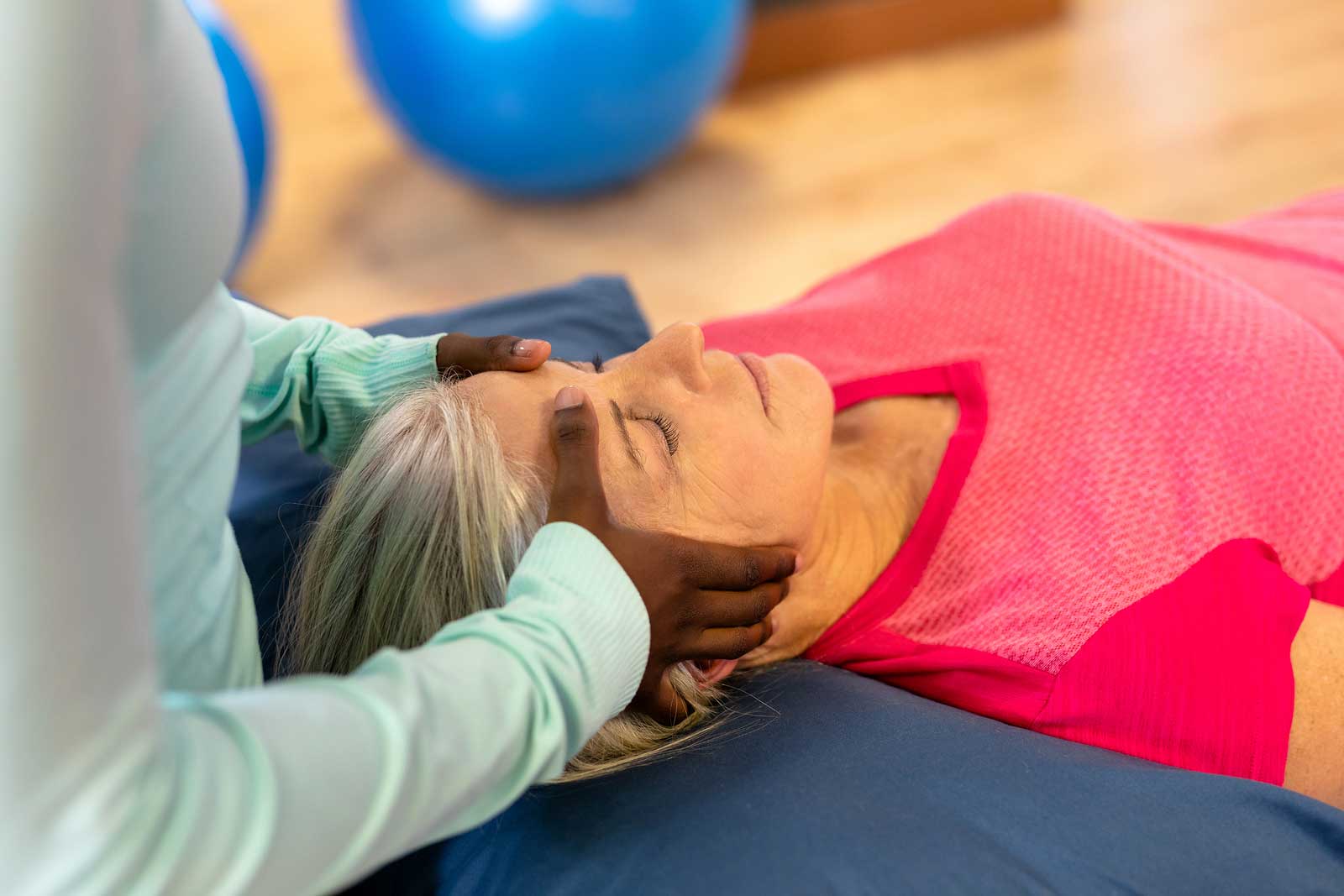Why Vestibular Therapy Might Be the Answer to Your Dizziness!
What is vestibular therapy?
Your sense of balance and spatial orientation is guided by a network of systems in your body — the inner ear’s “vestibular” system, your vision, and the sensory feedback from your muscles and joints. When the vestibular inner ear system or its connections are damaged or disrupted, you may feel dizziness, vertigo (spinning), unsteadiness, or imbalance.
Vestibular rehabilitation therapy (VRT) — sometimes just called vestibular therapy — is a specialised form of physical therapy designed to help people whose dizziness, vertigo or balance problems stem from vestibular system issues.
In simple words: if you’ve felt dizzy, off‑balance, light‑headed, or as if the room is moving even when you’re still, vestibular therapy might help retrain your body and brain to manage those signals more effectively.
Why might it be the answer to your dizziness?
Here are several reasons why vestibular therapy is often a strong choice for dizziness and related problems:
1. Many dizziness problems are due to vestibular issues
Whether it’s a problem in the inner ear (like benign paroxysmal positional vertigo—BPPV), damage from infection/trauma, or after a concussion, many cases of persistent dizziness / imbalance have a vestibular component.
2. It offers more than just symptom relief
Unlike simply taking medication for dizziness, vestibular therapy addresses the root cause: improving how your brain and body respond to faulty or missing vestibular signals. It encourages your brain to adapt and compensate by using vision and body‑sense feedback more effectively.
3. It reduces risk of falls and improves daily function
Dizziness and balance problems are not just annoying — they raise your risk of falls, injuries, and limit activity. Therapy helps improve stability, walking, head and eye movements, so you feel more confident in daily life.
4. It’s personalised
Therapists assess your specific deficits (balance, walking, gait, vision‑head movements) and design exercises just for you. This means your therapy is tailored to your lifestyle, condition and goals.
In short: if dizziness is interfering with your life, vestibular therapy is often an effective, targeted option rather than simply waiting or only treating symptoms.
How does vestibular therapy work?
Though the details vary depending on your condition, here’s a breakdown of typical components:
Assessment
You’ll be evaluated for balance, eye‑head movement, walking and gait, inner ear/vestibular function, and triggers of your dizziness.
Customised plan of exercises
Based on what’s found, the therapist will guide you through exercises such as:
- Gaze stabilization: exercises that train your eyes and head to move together while keeping vision steady.
- Habituation exercises: repeated exposure to movements or positions that normally provoke dizziness, so your body gradually adapts and the dizziness reduces.
- Balance and gait training: working on standing and walking in different conditions (uneven surfaces, turning head while walking) to improve your stability.
- Repositioning maneuvers: For conditions like BPPV, specific head movements are used to move tiny crystals in your inner ear (canaliths) back to where they belong.
Ongoing home exercises
Your therapist will often give you homework — simple exercises to do at home each day. Consistent effort boosts results.
Progress and adaptation
Over weeks, your brain rewires its balance and vestibular processing, reducing dizziness, improving balance and helping you return to normal activities. Some people feel improvement quickly; for others it takes longer.
What to expect: benefits, timeline and safety
Benefits
- Reduced dizziness, vertigo and motion‑sensitivity.
- Improved balance, fewer falls or sense of instability.
- Better vision‑with‑movement (so you’re less disoriented when you change position or when you’re walking).
- More confidence in everyday activities, less fear of moving around.
Timeline
Typically, you may be attending therapy for several weeks. Some improvement might be seen early; more significant change often comes with time and consistent work. In one study of chronic vestibular symptoms, therapy improved balance when compared with medication alone.
Safety and what to watch for
Generally safe when guided by a trained therapist. However:
- Some exercises may temporarily increase dizziness or nausea as your body adjusts.
- If you have certain conditions (like Meniere’s disease flare, uncontrolled heart issues, recent stroke) your therapist will tailor accordingly.
- It’s important to communicate with your therapist about what works/what feels too difficult.
Is vestibular therapy right for you?
You might consider it if:
- You feel persistent dizziness, unsteadiness or spinning sensations.
- You experience imbalance, frequent falls or difficulty walking straight.
- Your dizziness is triggered by head movement, changing position, or visual motion.
- You’ve been diagnosed with conditions like BPPV, vestibular neuritis, labyrinthitis, concussion, vestibular migraine or persistent postural‑perceptual dizziness (PPPD).
- You have tried medication or general therapy and still have symptoms.
What you can do right now?
- See a specialist or physical therapist who is trained in vestibular rehabilitation. Evaluation is the first step.
- Be consistent with your home exercises. The small daily efforts make a big difference long term.
- Track your symptoms: note what triggers dizziness, what improves it, how you feel after exercises. This helps your therapist refine your plan.
- Stay active: Gentle movement and returning to activity (even if you feel a bit off) helps‑ your balance system likes movement, not avoidance.
- Have patience: Sometimes your brain must relearn how to process balance cues. Slight worsening may happen before improvement, but consistent effort pays off.
- Communicate: If an exercise is too hard, you feel worse for many hours, or you have new symptoms (like hearing loss, ringing in ears, fluid from ears) you should tell your therapist or doctor.
FAQ’s:
1. What is vestibular therapy?
Vestibular therapy is a type of physical therapy that helps treat dizziness, vertigo, and balance problems caused by inner ear or brain issues.
2. Who should try vestibular therapy?
People with conditions like BPPV, vestibular neuritis, concussion, or unexplained dizziness and imbalance may benefit from this therapy.
3. How long does it take to see results?
Some people feel better after a few sessions, while others may need several weeks of consistent therapy to see lasting improvement.
4. Is vestibular therapy safe?
Yes, it’s generally safe when guided by a trained therapist. Some exercises may temporarily increase dizziness, but this is part of the retraining process.
5. Do I need a doctor’s referral?
In some places, yes. But many clinics allow direct appointments with a vestibular therapist—check with your local provider.
Final Thoughts:
Dizziness and imbalance can be frustrating, frightening and limiting. But for many people, vestibular therapy is a proven, effective path to improvement. It addresses the root cause of vestibular‑related dizziness by helping your brain and body re‑adjust to balance signals. You’re not just managing symptoms – you’re retraining your system so you can move with more confidence, less fear, and better stability.






